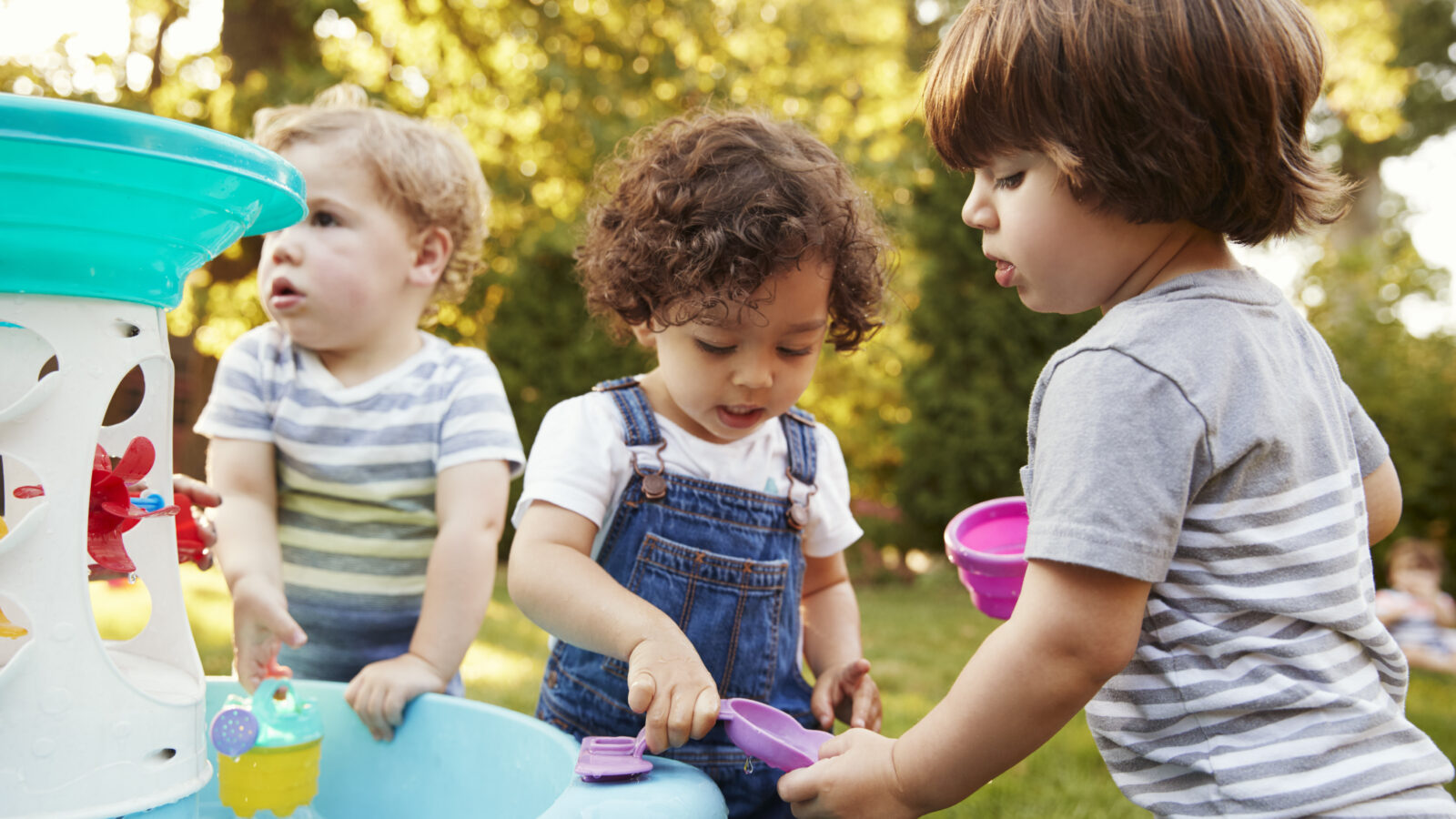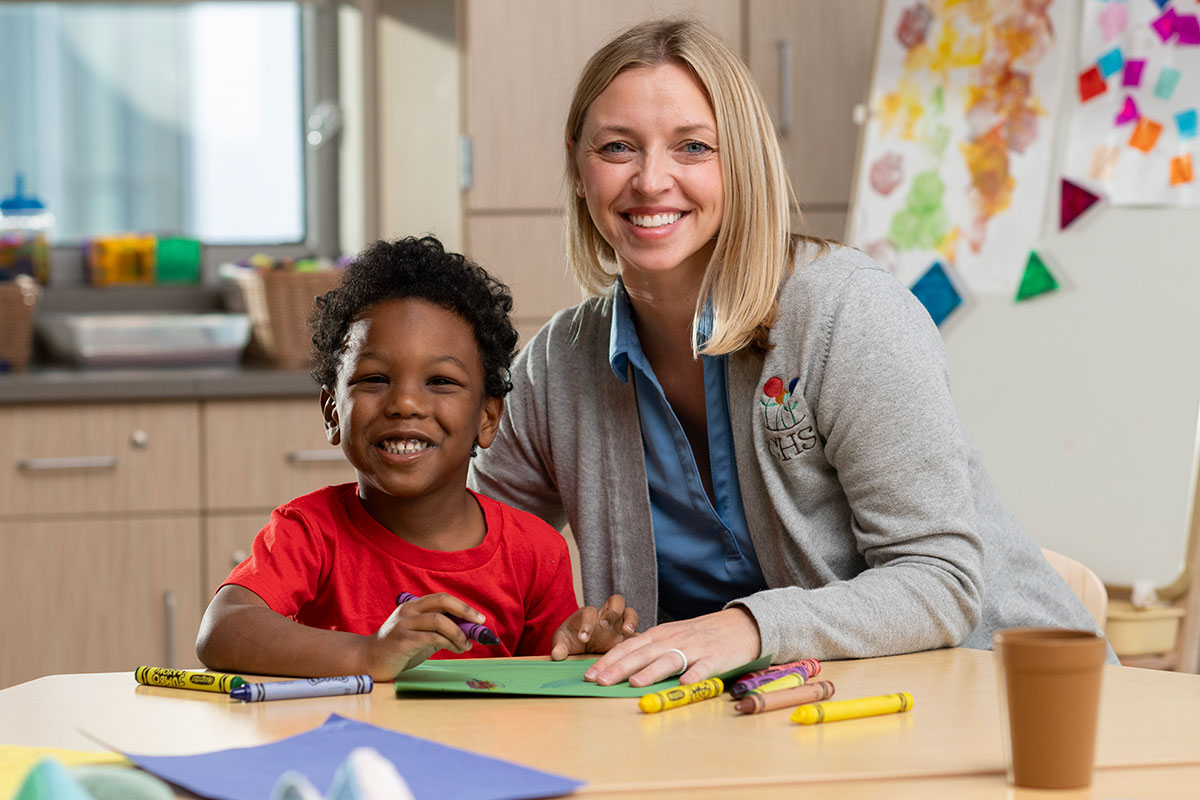Why Play-Based Learning Matters, and Tips You Can Try at Home

Whether children have a shiny new toy with lights and sounds, the box it came in, or pots and pans on the kitchen floor, one thing is sure— children love to play.
There are lots of different ways for children to engage in play activities: playing outside, playing with a group of friends, playing alone, playing with water, playing with sand, or playing with craft items. Playing is a lot of fun, and children naturally want to do it.
Because of this natural desire, many schools are using ‘play-based learning’ as a way of teaching the children in their care. Through play, children can learn how to make sense of the great big world around them, and although it might look different from the way you experienced early learning, it’s the best approach—according to education experts, and even pediatricians.
In a recent report, the American Academy of Pediatrics said that the most powerful way children learn is in environments designed for play. Some doctors are even writing ‘prescriptions for play’, as it is a critical part of healthy development, for learning life skills, helping with language and math, physical and social development, and reducing stress.
During the early years, children’s brains form connections: the more these connections are used, the stronger they become and the more complex networks they form, boosting their capacity for learning.
Expecting toddlers to sit quietly in rows and fill in worksheets doesn’t sound like much fun and is not an appropriate way for little ones of this age to learn. However, many families have some questions about play-based learning. Let’s look at some of them:
Is my child learning if they are playing?
Yes! Educators plan purposeful, meaningful activities that help children develop important skills and knowledge. Play-based activities will help them develop spatial awareness, problem-solving, or science concepts, among other skills.
If there are no worksheets, how will we know our child is making progress?
Worksheets aren’t necessary in early learning. Instead, staff use a variety of observation and documentation methods to track children’s progress and growth, and this should be shared with families. In addition, most early childhood centers will give you the opportunity to see your child’s progress with classroom activities.
What if I want my child to learn reading, writing, and math?
That’s great! Play-based learning builds the foundational skills that your child needs throughout their academic journey. Word and number activities, such as storytelling, rhyming games, and counting games, will help children develop early literacy and numeracy concepts.
You can also bring some of the ideas behind play-based learning into your own games and hands-on activities with your child. There are some great resources to help you get started, and you will probably find you can easily adapt the way you are already playing to give your child a learning boost!
Simple ideas include:
- Playing with blocks. When your child builds a tower, take some away, then add some more. This helps create an understanding of numbers.
- Fill a basket with different objects: pinecones, leaves, wooden spoons, furry fabric, or pieces of dried pasta. As your child picks one up, ask them how it feels. Describing these items will help your child develop language.
- When your child is in the bath (supervised!), give them plastic cups and bowls and encourage them to pour water from one to the other. You can also do this outside with sand or rice! This builds their hand-eye coordination and ability to concentrate.
- Ask them to tell you a story starring their favorite doll or plushy. Is Teddy a spaceman, a nurse, or a truck driver? The possibilities are endless. This fosters imagination and creativity.
Take a look at Sesame Workshop’s resources, which include a fun video explaining more ideas about learning through play. It also features child development expert Dr. Roberta Golinkoff discussing the benefits of guided play and showing ways you can extend your children’s learning through playful activities.
The next time your child says, ‘Play with me’, remember that you have a golden opportunity when you say “Yes!”. So go ahead! Unleash their creativity, foster their growth, and create unforgettable memories. Not only will you be having fun together, but you will also know you are contributing to their future academic success.




